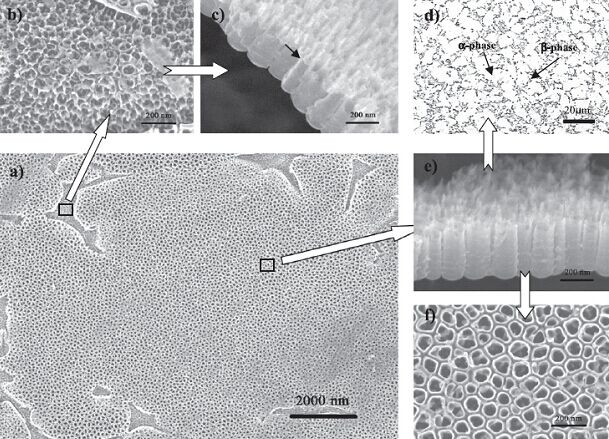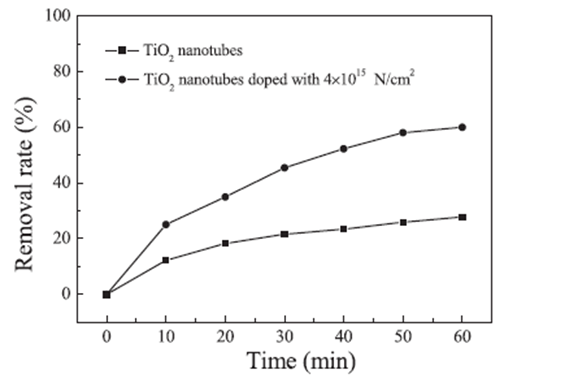Li-Ping Wang’s group at the Ningbo Institute of Materials Technology & Engineering (CNITECH), Chinese Academy of Sciences (CAS), found that Nitrogen-doped TiO2 nanotubes array has a higher photo-degradation rate under visible light. The TiO2 nanotube array is fabricated on titanium sheets via anodic oxidation followed by nitrogen implantation. The size of nanotube can be controlled from 50 nm to 150 nm of diameter and from 200 nm to 20 ?m of length. The nanotube array has a hardness of 0.4 GPa and modulus of 40 GPa by nanoindentation. Nitrogen doping extends the TiO2 photo-response into the visible light region of 400-800 nm and makes the removal rate increase by a factor of 2 for decomposition of Rhodamine B. The work has been published on Materials Research Express, 1(2014) 025040.

Fig.1 Surface morphologies of Ti6Al4V substrate before and after anodic oxidation.
(a), (b) and (f) SEM images from top views of TiO2 nanotubes array;
(d) microstructure of Ti6Al4V substrate observing through optical microscope before anodic oxidation;
(c) and (e) SEM images from cross-sectional views of TiO2 nanotubes array

Fig.2 Photodegradation rate of Rhodamine B for TiO2 nanotubes with and without doped nitrogen
Prof.Li-Ping Wang wangliping@nimte.ac.cn
All Images by ![]()

